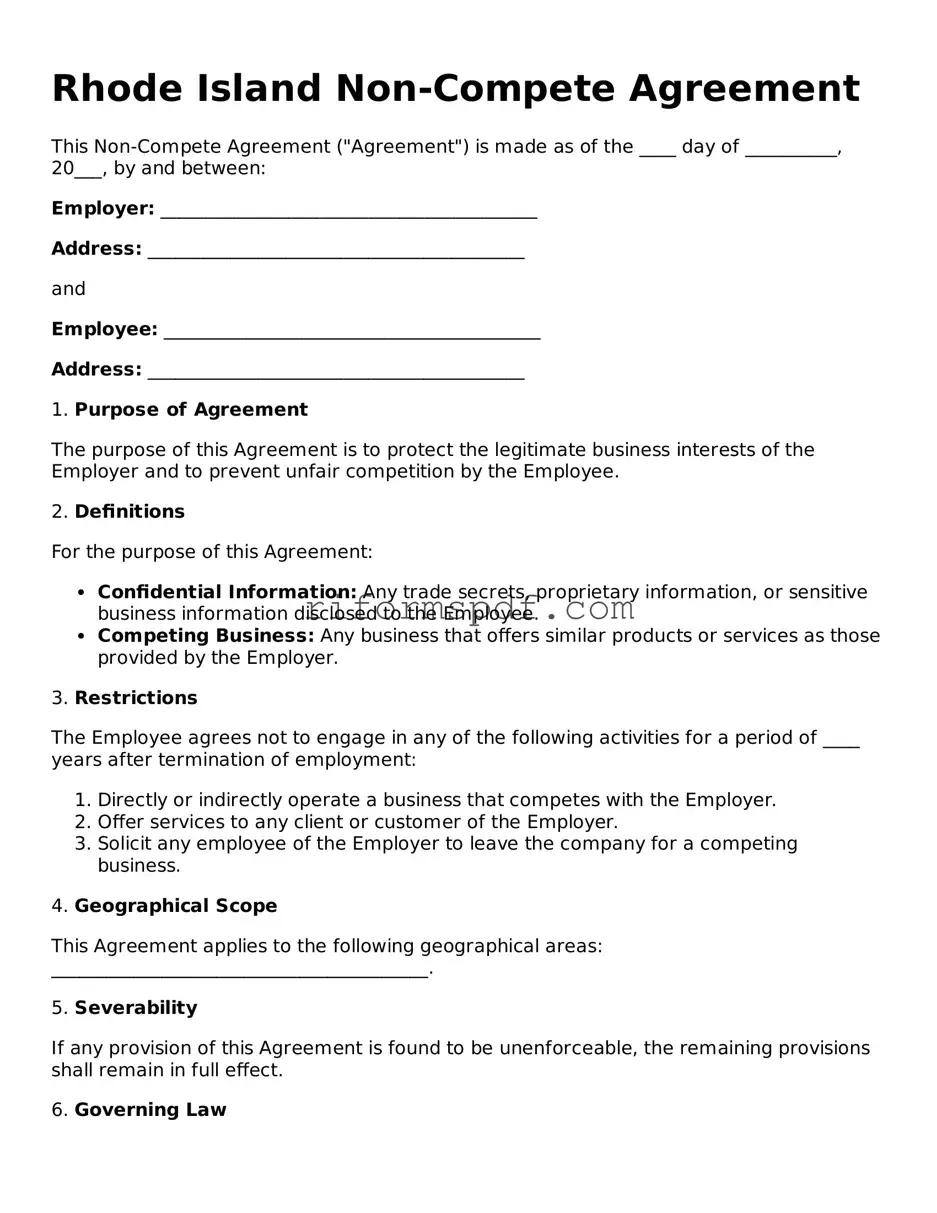In the competitive landscape of today's job market, the Rhode Island Non-compete Agreement form serves as a crucial tool for employers seeking to protect their business interests while balancing the rights of employees. This legal document outlines the terms under which an employee agrees not to enter into direct competition with their employer for a specified period after leaving the company. Key components of the form include the duration of the non-compete clause, the geographic scope of the restriction, and the specific activities that are prohibited. Employers must ensure that the terms are reasonable and not overly broad, as Rhode Island law requires that non-compete agreements be limited in time and space to be enforceable. Additionally, employees are encouraged to fully understand their rights and the implications of signing such an agreement, as it can significantly impact their future employment opportunities. By clearly delineating expectations and restrictions, the Rhode Island Non-compete Agreement form aims to foster a fair balance between protecting business interests and allowing individuals the freedom to pursue their careers without undue limitations.
